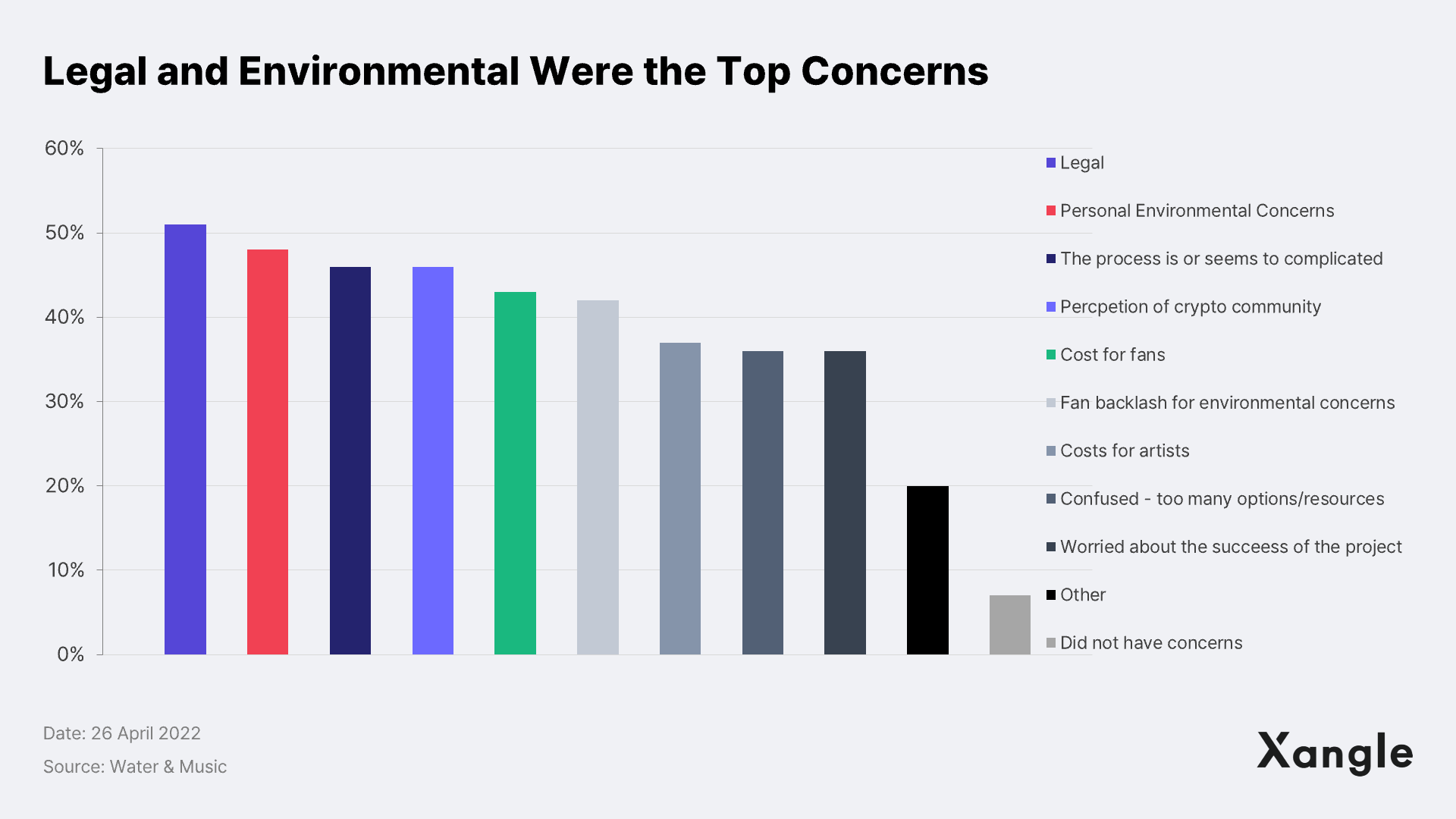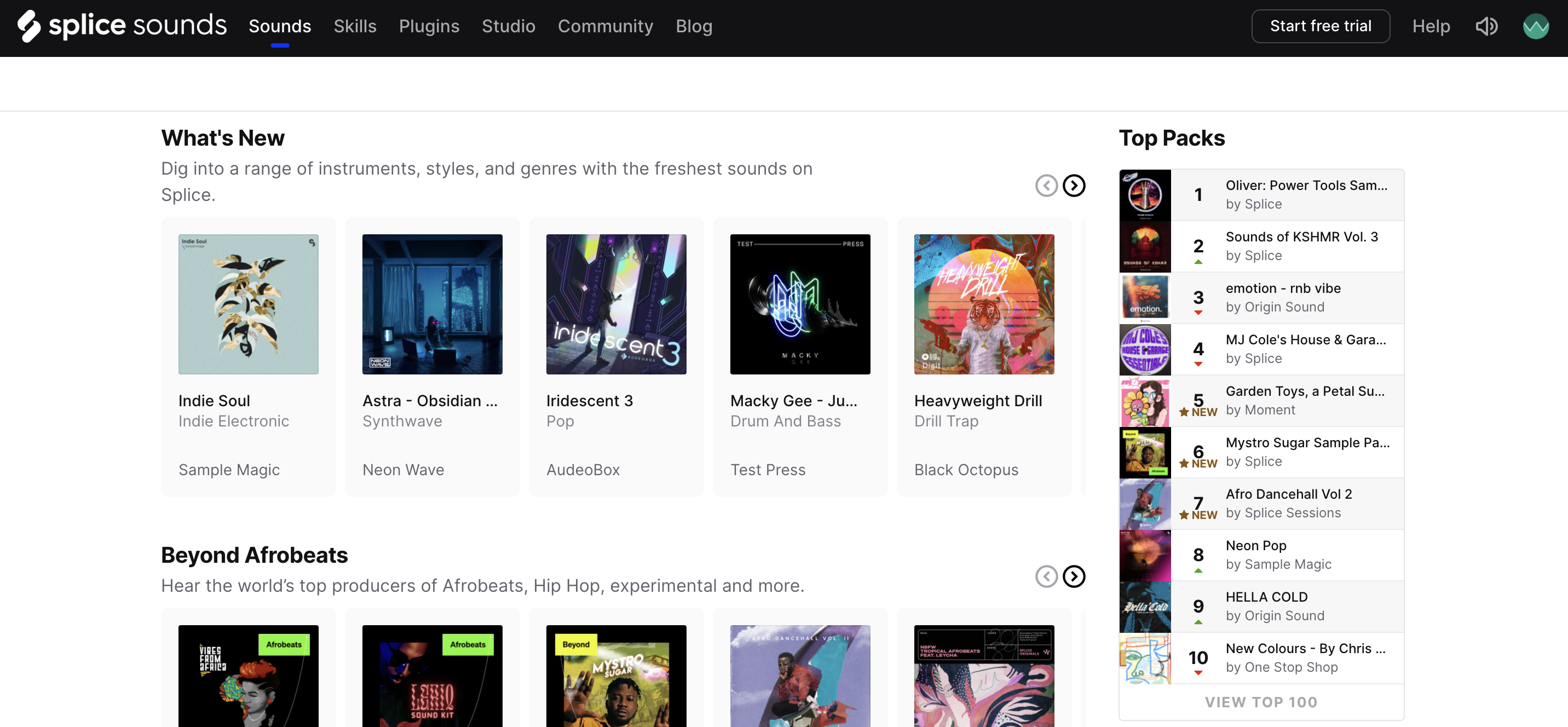[Xangle Originals]
Written by Bonk

Why Music NFTs?
Music NFTs may seem like a storm in a teapot at the moment, but many are betting on the possibilities that NFTs can bring to the industry. This includes Spotify, Universal Music Group, and the recently rebranded LimeWire.
Currently, the dominant narrative on music NFTs is that they will change the way artists create revenue and communicate with fans. Some early adopters in the Web3 music sphere proved this claim to be true: Daniel Allan, Haleek Maul, oshi, and even bigger names like Disclosure are already seeing the benefit of NFTs.
"On average, top Web3 artists have earned 7.5x more from selling music NFTs than their estimated earnings from a year’s worth of Spotify streams." Cooper Turley, founder of Sound, claims that the advent of NFTs is bound to change the music industry, which is considered to be one of the most under-monetized sectors.

The push for NFTs in music is making quiet strides. In October 2021, Catalog volume went straight up to $600k from $42k, a 13x surge in primary sales, while Sound generated $2.3M in primary sales as of April 2022. The two combined to onboard more than 400 artists to a growing audience of 5,000 unique collectors.
Current trends are showing that NFTs are indeed proving what they promised to the industry, but how much do we actually know what people think about Web3? And how will this sentiment affect the development of the industry?
Sentiment on Music NFTs

Water & Music's series of reports on Web3 well captures the industry sentiment. The report surveyed 252 individuals from the music industry on various topics pertaining to Web3.
When asked if they have ever participated in a Web3 project, 63% responded "no". When distinguishing the respondents into four categories to weigh the degree of involvement in Web3, it was found that 61% did not own NFTs.
Among those who did work in Web3, when asked the question, "What Web3 projects have you worked on?", 37% responded that they have launched at least one NFT project and 45% said they are currently working on one.
39% of survey takers who have never worked on a Web3 project before responded that they intend to work on a project at some point. 38% of the same audience replied that they were not sure, but were open to the idea. Only 23% of those who have not worked on a Web3 project yet claimed that they have no plans for the future either.
The above data indicates that only 15% of all survey takers do not intend to work on a Web3 project in the future.

Among the respondents, the most common role was artist, representing 26% of the sample group. 65% of artists reported that they self-released their music, while 32% went through independent labels, and only 3% had major releases.

One interesting point was that 93% of the respondents were familiar with NFTs. Yet, the perception of NFTs was the most polarizing. A high number of people who were familiar with NFTs stated they "disliked" NFTs (25%), while 40% responded the opposite. On the contrary, DAOs were the most favored, despite respondents showing lower levels of familiarity. One might suggest that the data shows that familiarity does not imply positive feelings towards Web3 applications.

The strong interest in Web3 applications naturally leads to concerns. Legal was the most frequently cited concern for both those who have and have not worked on a Web3 project. As definitions of NFTs are not established yet, there is a high risk for artists exploring the new technology.
Not to mention environmental concerns; as energy consumption of mining rigs has been shunned by many skeptics, including music fans, the music industry is taking cautious steps. Furthermore, issuing an NFT is confusing and costly for both artists and fans. The process and cost of NFTs also caused much concern.

When weighing the sentiment of fans, it has been found that 30.6% of the respondents identified as crypto-hesitant. Among crypto-hesitant fans, the majority (60.4%) were not planning on owning crypto.
Fans shared similar concerns with industry players. The top concerns included environmental and high costs. According to Water & Music, "Even among survey respondents who had purchased NFTs, 13.3% registered that they had reservations about the environmental effects of NFTs before diving in."
Also, it was found that the core audiences for some high-profile music NFT drops on Twitter were already identifying themselves as "Web3-native", distancing the music NFT crowd from the typical music fan. The alienation of the music NFT scene can be seen as a sign of early adoption. However, it can also mean that music NFTs are lacking widespread appeal.
When asked why they don’t own any music NFTs, 60% of crypto-only fans responded that they "don’t see the value" of music NFTs. Non-music NFT owners showed very different responses: 39.4% were "planning to but haven’t gotten around to it yet," and 33.3% were "waiting for a specific artist to launch a project."
To summarize
- The music industry is showing strong interest in Web3.
- NFTs are a polarizing subject.
- Major concerns include legal and environmental.
- Music NFTs are in their niche market phase.
Utility and Beyond
The debate on NFTs in general has been on the table for some time, and music NFTs are no exception when it comes to their utility. What rights does the holder acquire? What exactly can you do with a music NFT?
Currently, the music NFT market is largely comprised of collectible NFTs. An artist will release NFTs corresponding to their own music releases as 1-of-1 or 1-of-many NFT collections. NFT release strategies come in different forms as each artist has different goals for NFT sales: 1-of-1 NFTs appeal to the collectible nature of NFTs, while 1-of-many NFTs are mostly utilized as a fundraising tactic.
Unlike PFP (Profile Picture) NFTs that share a community of likeminded individuals seeking a common goal, whether it be the proliferation of a meme or sharing alpha, Music NFTs are more focused on artist-fan dynamics. This aspect can be a major reason why music NFTs lack utility compared to PFP NFTs, which is therefore largely dismissed by the crypto community.
At the moment, it seems like music NFTs are even less utilized than PFP NFTs as they don’t provide much utility to the holders. But still, there are attempts to distribute the value created by music through NFTs. Royal has been pioneering this idea by launching a series of NFT collections granting NFT holders royalty rights, but the model did not see much adoption due to legal concerns surrounding NFTs and copyrights.

When asked what they "want to get out of this purchase", crypto-hesitant and crypto-only respondents cited lack of utility as a primary reason why they were not bothering with NFTs. But many of those who owned NFTs responded with the opposite, listing utility as their primary reason for minting.
Though the response pertaining to utility was polarizing, we can takeaway that utility is the most important feature when purchasing an NFT. Yet, its utility as a membership can become less significant due to the unique value proposition of music NFTs.
Sound hosted NFT releases for 103 artists on its platform, supplying a total of 7,724 NFTs with an average of 76 NFTs per collection. Considering there are outliers such as Snoop Dogg, who sold 2,000 NFTs alone, the average NFTs per collection becomes much lower.

The number of NFTs released per collection on Sound is less than 1% of the typical 10,000 NFT collection. In terms of community creation, music NFTs have huge limitations at the moment. Therefore, more and more artists are residing to the collectible aspect of music NFTs.
1-of-1 NFTs maximize the collectible aspect, and there is a voice in the music NFT scene that a 1-of-1 music NFT can take the position as the "canon" in the digital world. meaning that the NFT will be the "original copy" of a music recording. This idea has been well articulated by Web3 artist Matthew Chaim.
The Abbey Road original vinyl pressing is not valuable because it has recordings on it that no one else can hear. It is valuable because it has recordings on it that nearly everyone in the world has heard. - @matthewchaim
The idea of a "canonical recording" somehow makes sense when an NFT is released as a 1-of-1. However, without proper infrastructure to consume said music NFT, the meaning of a canonical NFT is diluted. What is the use of a wav file that only sits in an IPFS storage system? Again, the debate comes back to utility, and the most basic utility of a music NFT must be the music itself.

The music NFT scene is already picking up on this issue. The creator of the music blog aggregator Hype Machine has launched Future Tape, also a music aggregator but for music NFTs. The application allows users to listen to releases from Sound, Catalog, and Nina. Currently, it is available on the web and has released its alpha version for iOS.
Unlike art, music requires additional infrastructure to be fully consumed, and the industry is slowly building the infrastructure to fully utilize the unique value proposition of music. But since the industry lacks such infrastructure, music NFTs are going down the path to maximize their value as collectibles for now.
Still, this doesn’t mean that 1-of-1 music NFTs will go away forever. A canonical NFT can allow multiple streaming platforms to pull the data from the NFT and all streaming revenue can be aggregated to one NFT. The holder and issuer can split the revenue (or not). The NFT holder’s address can be displayed on various platforms, including streaming and social.
1-of-many music NFTs will not be able to aggregate such data, but still act as a new medium. When we broaden the use case of NFTs as identifiers for specific individuals (or groups), and assume that NFTs will be integrated into the current technology stack, marketing tactics can be taken to new heights. For example, imagine an artist pushing direct messages to NFT holders on social media for exclusive content. What about using geolocation features to find nearby NFT holders?
The ability for NFT issuers to take snapshots to identify the state of an NFT can be a precious resource when formulating marketing strategies, as the artist can give back to their early supporters while supporters can be incentivized to search for hidden talent. But what is more important is that this artist-fan interaction can be arranged virtually anywhere on the globe. Before, the incentive to support a small artist was purely psychological. Now, everyone can become their own talent agency and gain additional benefits when successful.

Use cases for NFTs in music can also find their place at the production level. For example, NFT sound sample marketplaces like Splice can provide users with tokenized sound samples, and in turn, the user can give credit to the sample creator.
Furthermore, streaming platforms can enter partnerships with artists to provide benefits to NFT holders. For example, rewarding users for listening to a certain track. Some more advanced cases will include data marketplaces where the platform can purchase the tokenized version of streaming data for business purposes.
Music NFTs are yet to see their "CryptoPunks moment" despite the unique proposition they possess. The lack of legal boundaries and infrastructure is largely attributed to the low adoption rate in the broader NFT market. More development will be required for artists to feel confident in venturing into the new technology and to grant utility to fans. It will take time for the broader public to access music NFTs in a meaningful way, but as the industry is showing strong demand, we can expect the barriers to come down soon.